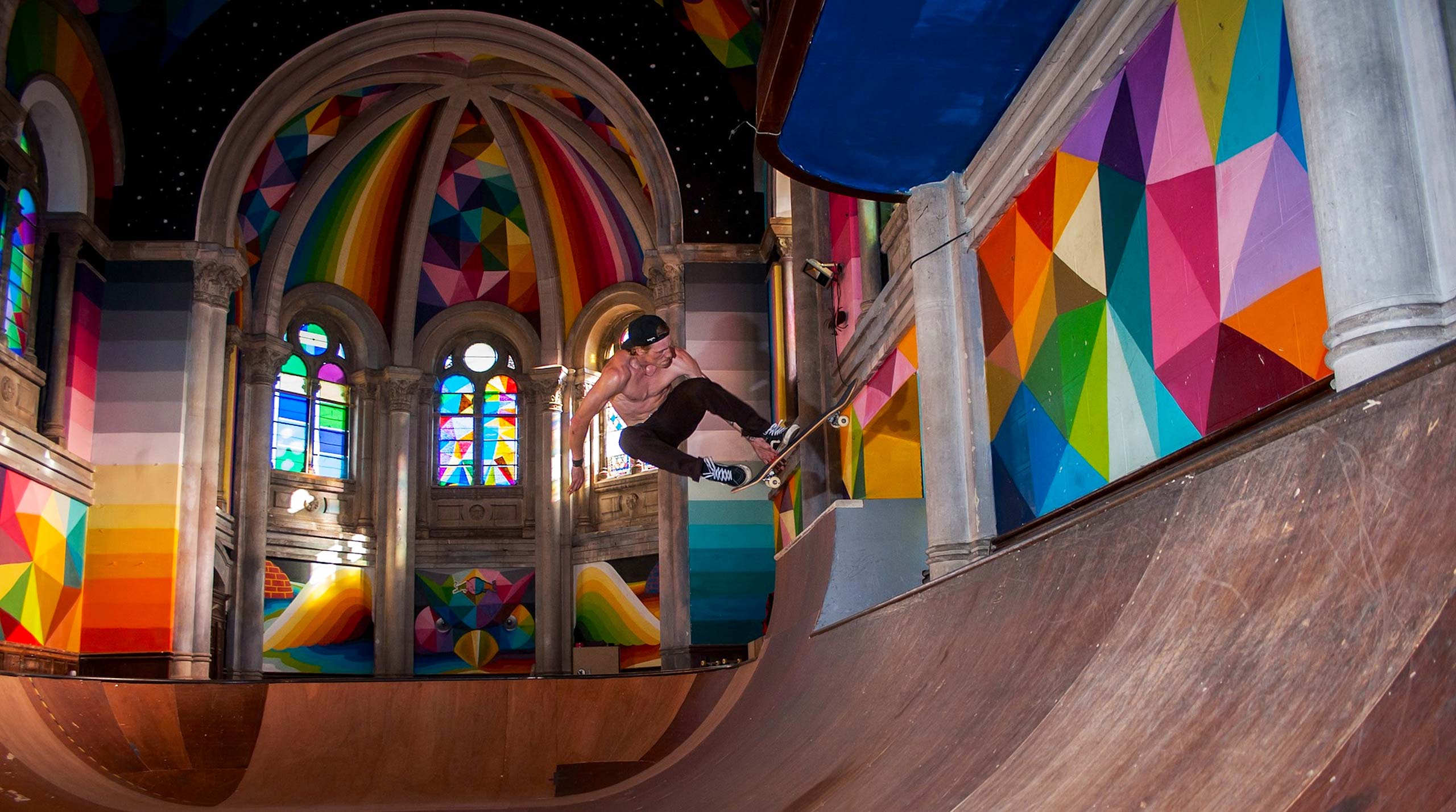A skatepark is a sports facility for the practice of skateboarding, an area where you can safely perform pirouettes, jumps and other skateboarding tricks. In general, these spaces are quite austere in appearance, as they are usually made of grey concrete. In most cases, it is the skateboarders themselves who are responsible for bringing these skate parks to life and personalising them.
One example of a custom skatepark is the Dimjalla skatepark, which Brad Wright made to look like a slice of watermelon. Another interesting case is the Griftpark in Utrecht, the Netherlands, which illustrator Jan is de Man painted with geometric motifs.
However, one of the most striking examples of skatepark decoration is the Church Brigade collective’s transformation, with the collaboration of artist Okuda, of the church of Santa Barbara in Llanera, Asturias, Spain.
Higher levels of theming are found in works such as the various illuminated skateparks created by Korean artist Koo Jeong. Another adopts a breakfast theme (with frying pan, eggs and bacon), a design by artist John Hillsong.
Another idea was provided by advertising company BBDO, which created an ephemeral skatepark in the shape of a pinball machine to promote the citrus soft drink Mountain Dew. This park included a series of sensors that detected the movement of the skateboarders and activated lights and sounds.
The above are just examples of a trend that seeks to move away from the monotony of concrete and turn skateparks into creative, stimulating and unique spaces for the enjoyment of skateboarders and the public that observes them.
By Miquel Solís, senior architect in the Architecture Department of Amusement Logic






